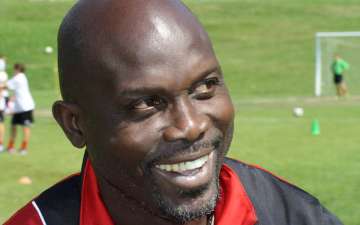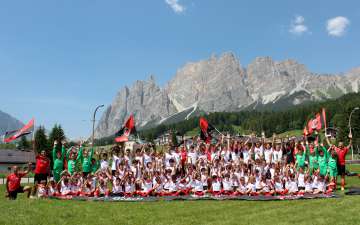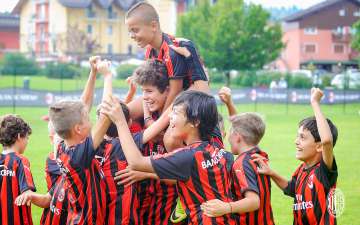Section 1: Introduction
ASD Sporteventi, as a member of ASC and in compliance with ASC Guidelines dated 28/08/2023, adopts this Organisational Model for Management and Control (OMC) to prevent abuse, violence, and discrimination among its registered members, ensuring a safe and inclusive environment. The model is grounded in principles of respect, dignity, and protection of the fundamental rights of all participants in sporting activities.
Section 2: Objectives
The key goals of the OMC are:
- Preventing incidents of abuse, violence, and discrimination.
- Promoting equality, diversity, and inclusion.
- Ensuring effective and confidential reporting procedures.
- Raising awareness and providing safeguarding training to athletes, coaches, and club officials.
Section 3: OMC Structure
3.1 Safeguarding Officer
- Appointment: The ASD Sporteventi Board has appointed a Safeguarding Officer to counter abuse, violence, and discrimination.
- Duties:
- Oversee the implementation of the OMC.
- Receive and manage safeguarding reports.
- Promote educational and awareness-raising initiatives.
3.2 Prevention and Management Protocols
Risk Assessment
- High-Risk Areas:
- Changing rooms and showers: potential for unsupervised physical contact.
- Private communications: risk of inappropriate behaviour (texts, chats, social media).
- Team travel and away matches: risk of unsupervised or intimate situations.
- Medical and physiotherapy settings: necessary physical contact during treatment.
- Vulnerable Categories:
- Minors.
- New members or those unfamiliar with the club environment.
Practical Preventive Measures
- Supervision:
- Minimum of two adults present during all critical moments (changing rooms, away games).
- Restricted access to sensitive areas (e.g. gender-specific changing rooms, designated hours for minors).
- Interaction Protocols:
- No unnecessary physical contact. Permitted only for technical corrections (e.g. posture adjustment), with prior explanation and athlete’s consent.
- No private messaging with minors; use official group chats monitored by staff.
- Away Match Procedures:
- Separate accommodations for staff and players. Minors must share rooms only with teammates of the same sex.
- Regular Risk Assessment:
- Coordination meetings every six months to identify risks and suggest improvements.
3.3 Handling of Reports
- Reporting Channels:
- Online: anonymous form available on the club’s website.
- Email: reports sent to a dedicated address (e.g. sgo@sporteventi.it).
- Phone: direct line to the Safeguarding Officer during set hours.
- In person: private meeting with the Safeguarding Officer or appointed member.
- Handling Process:
- Acknowledgement: Immediate confirmation of receipt to the reporting person (if identified), with guaranteed confidentiality.
- Evaluation: Within 48 hours, the Safeguarding Officer assesses the nature and urgency of the report.
- Preliminary Inquiry: Club Board involvement if necessary, with discreet information gathering.
- Immediate Action: In serious cases, precautionary suspension of the person involved; authorities contacted when appropriate.
- Follow-up: Update to the reporter within 7 days (if identifiable); implement corrective or preventive actions.
3.4 Disciplinary Measures
- Sanctions may include:
- Written warnings, temporary suspension, permanent exclusion from club activities, or removal from membership or official roles.
- Applicable to all club members: players, staff, coaches, officials, or other affiliates.
- Sanction severity is determined by the Club Board, potentially with input from the Safeguarding Officer, based on the seriousness and nature of the incident.
- Victim Support:
- Access to psychological and legal assistance.
3.5 Training and Education
- Mandatory Training:
- Content:
- Abuse prevention: recognising warning signs and taking appropriate action.
- Ethical communication: safe and respectful interaction guidelines.
- Role of the Safeguarding Officer: procedures and legal responsibilities.
- Training Sessions:
- Annual sessions for all staff and officials.
- Specific sessions for coaches, including real-case scenarios and simulations.
- Delivery Modes:
- In-person: expert-led group workshops.
- Online: e-learning platform for ongoing updates.
- Content:
3.6 Communication Obligations
- Policy Dissemination:
- OMC document, code of conduct, and Safeguarding Officer contact info must be displayed on:
- Official club website.
- Club premises.
- Social media platforms.
- Notice boards at training facilities.
- OMC document, code of conduct, and Safeguarding Officer contact info must be displayed on:
- Member Awareness:
- Provide an information kit (print or digital) during registration.
- Organise regular meetings with parents and guardians to explain safeguarding policies.
- Monitoring Tools:
- Biannual anonymous surveys to gather feedback from members.
3.7 Monitoring and Evaluation
- Annual Audit:
- Conducted by an external consultant to:
- Review the effectiveness of safeguarding measures.
- Update the OMC based on audit outcomes and any issues raised by the Safeguarding Officer.
- Conducted by an external consultant to:
Implementation Checklist
- Within 3 Months:
- Train all personnel and distribute information materials.
- Apply protocols for away games and changing room use.
- Within 6 Months:
- Evaluate the effectiveness of the safeguarding report management system.
- Conduct first round of anonymous feedback surveys.
- Annually:
- Review and update the OMC based on new regulations and evaluation results.



